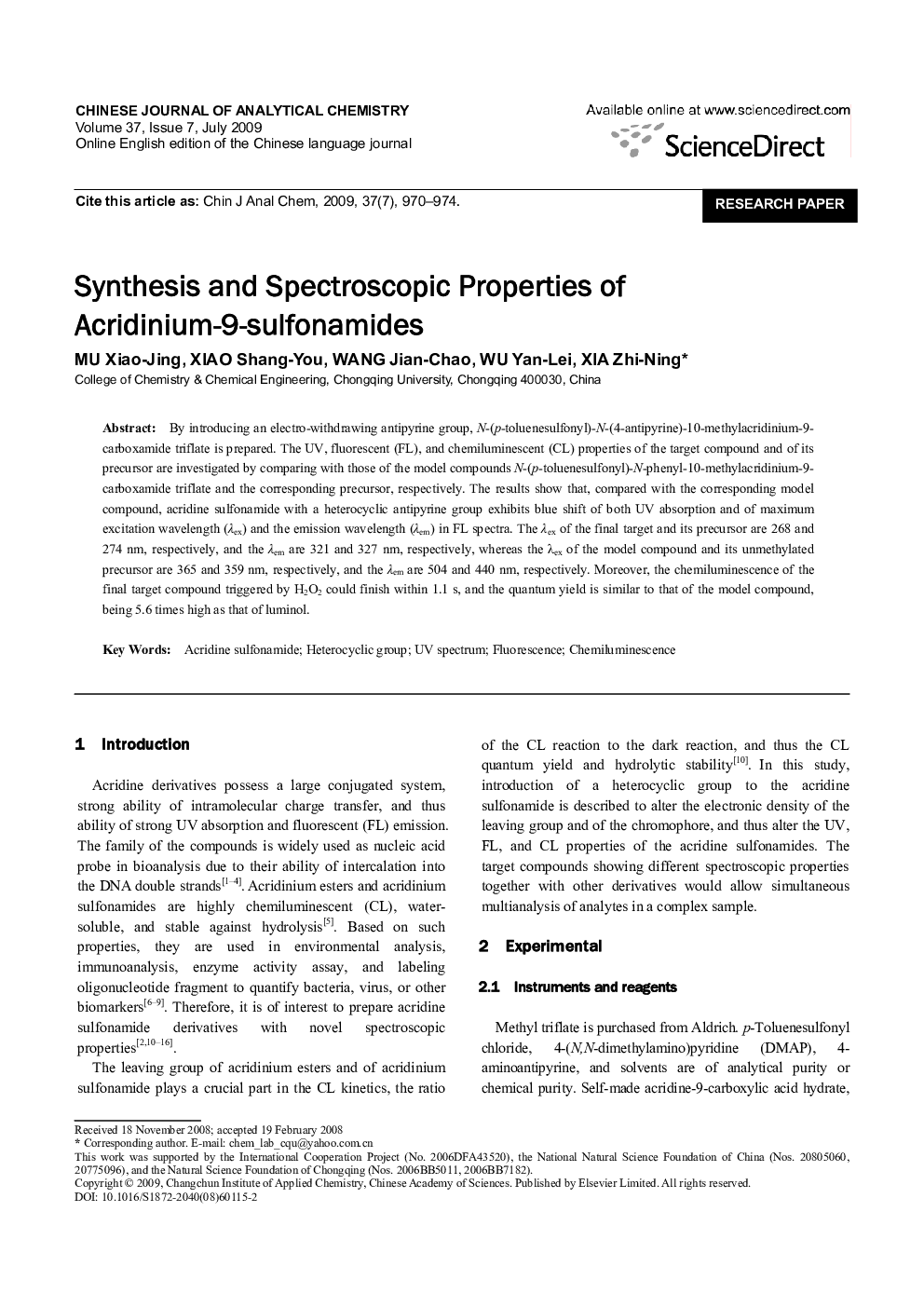| کد مقاله | کد نشریه | سال انتشار | مقاله انگلیسی | نسخه تمام متن |
|---|---|---|---|---|
| 1182280 | 1491695 | 2009 | 5 صفحه PDF | دانلود رایگان |

By introducing an electro-withdrawing antipyrine group, N-(p-toluenesulfonyl)-N-(4-antipyrine)-10-methylacridinium-9-carboxamide triflate is prepared. The UV, fluorescent (FL), and chemiluminescent (CL) properties of the target compound and of its precursor are investigated by comparing with those of the model compounds N-(p-toluenesulfonyl)-N-phenyl-10-methylacridinium-9-carboxamide triflate and the corresponding precursor, respectively. The results show that, compared with the corresponding model compound, acridine sulfonamide with a heterocyclic antipyrine group exhibits blue shift of both UV absorption and of maximum excitation wavelength (λex) and the emission wavelength (λem) in FL spectra. The λex of the final target and its precursor are 268 and 274 nm, respectively, and the λem are 321 and 327 nm, respectively, whereas the λex of the model compound and its unmethylated precursor are 365 and 359 nm, respectively, and the λem are 504 and 440 nm, respectively. Moreover, the chemiluminescence of the final target compound triggered by H2O2 could finish within 1.1 s, and the quantum yield is similar to that of the model compound, being 5.6 times high as that of luminol.
Journal: Chinese Journal of Analytical Chemistry - Volume 37, Issue 7, July 2009, Pages 970-974